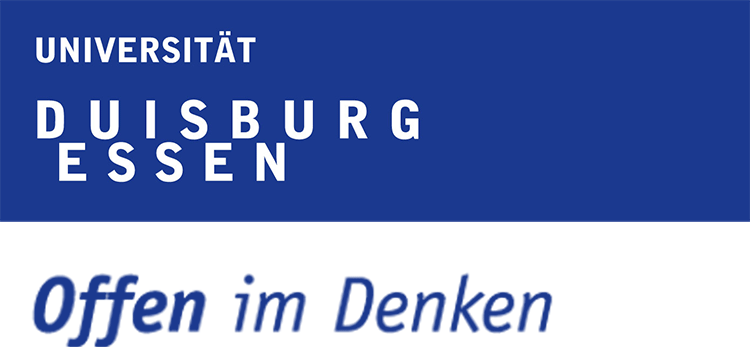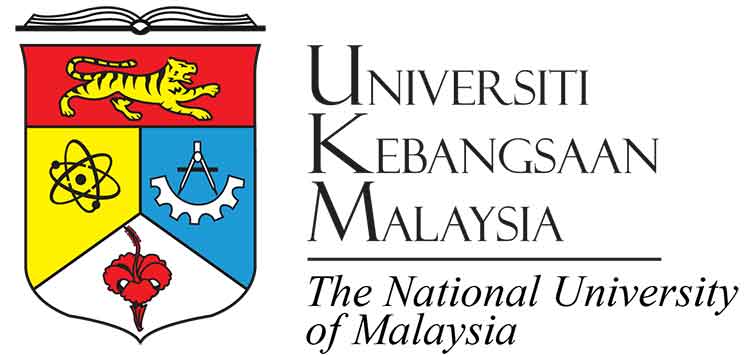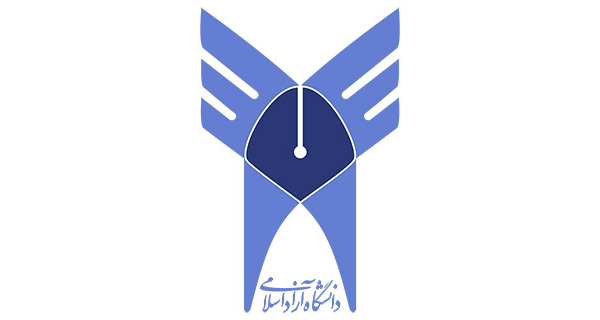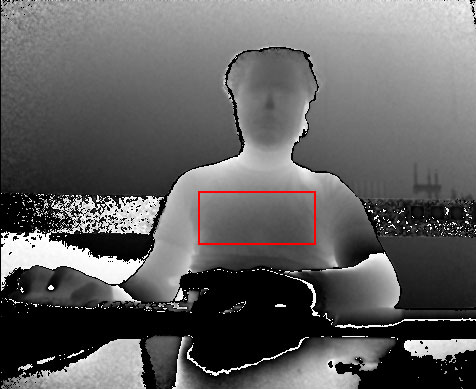Sr. Machine Learning Engineer
Montreal, QC, Canada

I am not Kaveh Bakhtiari, the Cinematographer & Director (IMDb) .
"Data knows everything, you just need to speak her language." - Myself
As a Data Scientist, AI researcher, and full-stack developer, I lead Musingway Ltd. , pioneering at the intersection of technology and innovation. Currently residing in Montreal, QC, Canada, I'm immersed in AI, Cognitive Science & System Engineering research at The National University of Malaysia (UKM) and the University of Duisburg-Essen , Germany, advancing my PhD studies.
Diverse linguistic exploration is a passion of mine. Fluent in Persian/Farsi (Native), English, French, German, Spanish, Italian, Esperanto, Hebrew, Malay, Mandarin (Chinese), and Japanese, I embrace the beauty of language. Beyond linguistics, I indulge in travel, numismatics, and music — particularly Guitar and Violin.
My mantra is simple yet profound:
"Do what you can, & Try what you cannot."
Feel free to reach out if you'd like to connect.
Kaveh Bakhtiyari

Lead AI/ML Engineer

AI / Computer Science Lecturer
Sayan Soft Co. Ltd.
Tehran, Iran

Computer Science

Electrical, Electronic & System Engineering

Master of IT - Artificial Intelligence

BSc. Computer Engineering - Software
Bonn, Germany

Seoul, South Korea

Kuala Lumpur, Malaysia

Kuala Lumpur, Malaysia

Kuala Lumpur, Malaysia

Tafresh, Iran

Karaj, Iran

The numbers about me!

Driven by a curiosity to delve into diverse realms of science, I've immersed myself in an array of fields. Primarily, my research orbits around Artificial Intelligence, Human-Computer Interaction (HCI), and Game Theory, where I explore their interplay and implications. Additionally, I'm delving into emerging domains such as Affective Computing and Psychology, particularly in crafting intelligent autonomous systems. My overarching interest lies in leveraging intelligent systems to tackle real-world challenges across business, engineering, and cognitive sciences.



Kinect Respiratory (KinRes) is an open source project, and it can be found in GitHub repository .




LaSalle College, Montreal, QC, Canada
TechWeek 2024 - Innovators in Technology
More info... |
Presentation (PPTX - 15 MB) |
Presentation (PPSX - 15 MB) |
SSENSE HQ, Montreal, QC, Canada
Innovation Day 2023
Presentation (PDF - 12 MB)
LaSalle College, Montreal, QC, Canada
TechWeek 2022 - Innovators in Technology
More info... |
Presentation (PDF - 28.8 MB)
SSENSE HQ, Montreal, QC, Canada
Innovation Day 2022
Presentation (PDF - 3.27 MB)
LaSalle College, Montreal, QC, Canada
Journée Pédagogogique
More info... |
Presentation (PDF - 4.40 MB)
LaSalle College, Montreal, QC, Canada
TechWeek 2021 - Innovators in Technology
More info... |
Presentation (PDF - 2.10 MB)
LaSalle College, Montreal, QC, Canada
International Business Week - Semaine Internationale de la Gestion (SIG 21)
More info... |
Presentation (PDF - 2.57 MB)
LaSalle College, Montreal, QC, Canada
TechWeek 2020 - Innovators in Technology
More info... |
Presentation (PDF - 2.4 MB)
LaSalle College, Montreal, QC, Canada
TechWeek 2019 - Innovators in Technology
More info... |
Program/Abstracts (PDF - 6.41 MB) |
Presentation (PDF - 2.3 MB)
University of Science & Culture, Tehran, Iran
The 5th IEEE International Conference on Web Research (ICWR)
More info... |
Presentation (PDF - 920 KB)
Iran University of Science & Technology, Tehran, Iran
Invited Speaker - Faculty of Computer Engineering
Chair: Dr. Behrooz Minaei & Dr. Hossein Rahmani
Poster (JPG - 415 KB) |
Presentation (PPTX - 95.9 MB)
Convention & Exhibition Centre, Parkovy, 16a Parkova Rd., Kiev (Kyiv), Ukraine
IT Weekend - Invited Speaker by SoftServe Inc.
Visa was refused by the Embassy of Ukraine in Iran due to failure to prove the purpose of travel despite providing all the required documents from the inviting party.
More info... |
Screenshot (JPG - 1.30 MB)
Telefonica Tower, Barcelona, Spain
The 11th EAI International Conference on Pervasive Computing Technologies for Healthcare (PervasiveHealth)
More info... |
A4 Poster (PDF - 766 KB)
Vila Gale Santa Cruz Hotel, Madeira, Portugal
The 8th International Conference on Ambient Systems, Networks and Technologies (ANT)
More info... |
Presentation Slides (PDF - 1.03 MB)
Arrowle Hotel, Kanazawa, Japan
The 9th Asian Conference on Intelligent Information and Database Systems (ACIIDS)
More info... |
Presentation Slides (PDF - 529 KB)
University of Concordia, Montréal, QC, Canada
Invited Speaker - Institute of Information System Engineering
Organized by Prof. Dr. Jamal Bentahar & Assoc. Prof. Dr. Jia Yuan Yu
More info... |
Presentation Slides (PDF - 1.51 MB)
University of Duisburg–Essen, Duisburg, Germany
Interactive Systems, Faculty of Engineering
Organized by Prof. Dr-Ing. Jürgen Ziegler
Puri Pujangga, UKM, Malaysia
The International Conference on Engineering and Built Environment (ICEBE)
More info...
Hotel Equatorial Bangi, Malaysia
The Annual Seminar of DSP Research Group, Faculty of Engineering, The National University of Malaysia (UKM)
Presentation Slides (PDF - 516 KB)
Swiss Garden Hotel, Cherating Beach, Kuantan, Malaysia
Organized by Iranian Students' Association at UKM (ISAUKM)
Language: Persian / Farsi
University of Duisburg – Essen, Duisburg, Germany
Department of Psychology-Media and Communication, Faculty of Engineering
Organized by Prof. Dr. Nicole Krämer
Citations:
 |
h-index:
|
h-index:
 |
i10-index:
|
i10-index:
 (Source:
Google Scholar
)
(Source:
Google Scholar
)
Smart contracts struggle with the major limitation of operating on data that is solely residing on the blockchain network. The need of recruiting third parties, known as oracles, to assist smart contracts has been recognized with the emergence of blockchain technology. Oracles could be deviant and commit ill-intentioned behaviors, or be selfish and hide their actual available resources to gain optimal profit. Current research proposals employ oracles as trusted entities with no robust assessment mechanism, which entails a risk of turning them into centralized points of failure. The need for an effective method to select the most economical and rewarding oracles that are self-interested and act independently is somehow neglected. Thus, this paper proposes a Bayesian Bandit Learning Oracles Reliability (BLOR) mechanism to identify trustless and cost-efficient oracles. Within BLOR, we learn the behavior of oracles by formulating a Bayesian cost-dependent reputation model and utilize reinforcement learning (knowledge gradient algorithm) to guide the learning process. BLOR enables all the blockchain validators to verify the obtained results while running the algorithm at the same time by dealing with the randomness issue within the limited blockchain structure. We implement and experiment with BLOR using Python and the Solidity language on Ethereum. BLOR is benchmarked against several models where it proved to be highly efficient in selecting the most reliable and economical oracles with a fair balance.
In ancient history, the concepts of chance and randomness were intertwined with that of fate. Many ancient people threw dice to determine fate, and this later evolved into games of chance. Today, we are still using randomness in our daily life explicitly or implicitly. It is however very crucial to understand the underlying concept of randomness and its importance. Firstly, we should understand what defines random value as random. Randomness has multiple applications in finance, game theory, cryptography, artificial intelligence, and many more. So, one of the challenging questions is how likely we can predict it? The answer can bring us to the next level of possibilities in the world. For the moment, we should learn how these random phenomena can affect our life, and how we can make a benefit from that.
This paper introduces a novel blockchain-based decentralized federation model that embodies quality verification for cloud providers who lease computing resources from each other. The blockchain structure removes the barriers of a traditional centralized federation and offers a fully distributed and transparent administration by enforcing the involved agents to maintain consensus on the data. For a blockchain-based federation, it is vital to avoid blind-trust on the claimed SLA guarantees and monitor the quality of service which is highly desirable considering the multi-tenancy characteristic of cloud services. Due to the fact that the blockchain network is unable to access the outside world, it cannot handle, by its own, providers misbehavior in terms of SLA violations. Thus, we introduce oracle as a verifier agent to monitor the quality of the service and report to the smart contract agents deployed on the blockchain. Oracle is a trusted third-party agent who can communicate with the outside world of the blockchain network. The interaction between cloud service providers (either providing a service or requesting it from another provider) and the oracle through smart contracts comprises a system of autonomous and utility maximizer agents. Cloud requesters seek to receive high quality services with constant monitoring at cheap prices or even with no charge, while cloud providers aim to have a balanced work-load with less preserved capacity, and the oracle tends to charge higher for their monitoring services. Therefore, to model this conflicting situation, we formulate a dynamic Stackelberg differential game to optimize the cost of using the oracle and maximize the profit of the agents with the role of provider agent as a leader, and the requester and verifier agents as followers. Our designed Stackelberg differential game can seize the dynamicity of users' demand and resource provisioning in a competitive cloud market. We implemented our proposed decentralized model using the Solidity language in the remix IDE on the Ethereum network. We further evaluated the optimal controls and agents' profit with real-world data simulated for three concrete cloud providers. The results revealed that the requester agent initiates most of the quality verification requests at the beginning to the middle time of the contract. Thus, the provider agent could reserve less computing resources considering the fact that it could share the workload among other customers' computing resources during the peak-time. Moreover, imposing a higher penalty on the provider agent increased the capacity and decreased the number of requests for quality verification at the equilibrium. The evaluation also disclosed that the impact of timing in the dynamic pricing strategy of the verifier agent is very minimal, and the provisioning capacity of the provider is strongly correlated with the monitoring price.
Computational feature recognition is an essential component for intelligent systems to sense the objects and environments. This paper proposes a novel conceptual model, named Ambiance Signal Processing (AmSiP), to identify objects’ features when they are not directly accessible by sensors. AmSiP analyzes the surrounding and ambiance of objects/subjects collaboratively to recognize the object’s features instead of concentrating on each individual and accessible object. To validate the proposed model, this study runs an experiment with 50 participants, whose emotional state variations are estimated by measuring the surroundings features and the emotions of other people in the same environment. The results of a t-Test on the data collected from this experiment showed that users’ emotions were being changed in a course of time during the experiment; however, AmSiP could estimate subjects’ emotions reliably according to the environmental characteristics and similar patterns. To evaluate the reliability and efficiency of this model, a collaborative affective computing system was implemented using keyboard keystroke dynamics and mouse interactions of the users whose emotions were affected by different types of music. In comparison with other conventional techniques (explicit access), the prediction was reliable. Although the developed model sacrifices a minor accuracy, it earns the superiority of uncovering blind knowledge about the subjects out of the sensors’ direct access.
In this paper, we introduce, design and develop Cloudchain, a blockchain-based cloud federation, to enable cloud service providers to trade their computing resources through smart contracts. Traditional cloud federations have strict challenges that might hinder the members’ motivation to participate in, such as forming stable coalitions with long-term commitments, participants’ trustworthiness, shared revenue, and security of the managed data and services. Cloudchain provides a fully distributed structure over the public Ethereum network to overcome these issues. Three types of contracts are defined where cloud providers can register themselves, create a profile and list of their transactions, and initiate a request for a service. We further design a dynamic differential game among the Cloudchain members, with roles of cloud service requesters and suppliers, to maximize their profit. Within this paradigm, providers engage in coopetitions (i.e., cooperative competitions) with each other while their service demand is dynamically changing based on two variables of gas price and reputation value. We implemented Cloudchain and simulated the differential game using Solidity and Web3.js for five cloud providers during 100 days. The results showed that cloud providers who request services achieve higher profitability through Cloudchain to those providers that supply these requests. Meanwhile, spending high gas price is not economically appealing for cloud requesters with a high number of requests, and fairly cheaper prices might cause some delays in their transactions during the network peak times. The best strategy for cloud suppliers was found to be gradually increasing their reputation, especially when the requesters’ demand is not significantly impacted by the reputation value.
Here is what we learned from the AI’s failure to predict the results of the FIFA World Cup 2018 Russia.
Researchers and academics disseminate and share their research findings with other scholars by publishing in a scientific venue (e.g. journal or conference proceedings). Despite the recent advances in the publishing industry and using the Internet as a medium of knowledge sharing, scientific publishing industry deals with many problems which slow down the knowledge progress and waste lots of time and money respectively. This article criticizes the scientific publishing industry for time and money costs, favoritism, political views interference, the vague share of authorship, barriers of having flexible and interactive contents, and not fulfilling the gap between research and development.
The number of citations that a paper has received is the most commonly used indicator to measure the quality of research. Researchers, journals, and universities want to receive more citations for their scholarly publications to increase their h-index, impact factor, and ranking respectively. In this paper, we tried to analyses the effect of the number of available Google Scholar versions of a paper on citations count. We analyzed 10,162 papers which are published in Scopus database in year 2010 by Malaysian top five universities. Then we developed a software to collect the number of citations and versions of each paper from Google Scholar automatically. The result of spearman correlation coefficient revealed that there is positive significant association between the number of Google Scholar versions of a paper and the number of times a paper has been cited.
This paper proposes a novel reliable solution, named KinRes, to extract contactless respiratory signal via an IR-3D Depth sensor (Microsoft Kinect 2) on human subjects interacting with a computer. The depth sensor is very sensitive to the minor changes so that the body movements impose noise in the depth values. Previous studies on contactless respiratory concentrated solely on the still laid subjects on a surface to minimize the possible artifacts. To overcome these limitations, we low-pass filter the extracted signal. Then, a greedy self-correction algorithm is developed to correct the false detected peaks & troughs. The processed signal is validated with a simultaneous signal from a respiratory belt. This framework improved the accuracy of the signal by 24% for the subjects in a normal sitting position.
Promoting recommender systems in real-world applications requires deep investigations with emphasis on their next generation. This survey offers a comprehensive and systematic review on recommender system development lifecycles to enlighten researchers and practitioners. The paper conducts statistical research on published recommender systems indexed by Web of Science to get an overview of the state of the art. Based on the reviewed findings, we introduce taxonomies driven by the following five phases: initiation (architecture and data acquisition techniques), design (design types and techniques), development (implementation methods and algorithms), evaluation (metrics and measurement techniques) and application (domains of applications). A layered framework of recommender systems containing market strategy, data, recommender core, interaction, security and evaluation is proposed. Based on the framework, the existing advanced humanized techniques emerged from computational intelligence and some inspiring insights from computational economics and machine learning are provided for researchers to expand the novel aspects of recommender systems.
Heart rate variability (HRV) is known to be correlated with emotional arousal, cognitive depletion, and health status. Despite the accurate HRV detection by various body-attached sensors, a contactless method is desirable for the HCI purposes. In this research, we propose a non-invasive contactless HRV measurement by Microsoft Kinect 2 sensor with Respiratory Sinus Arrhythmia (RSA) correction. The Infrared and RGB cameras are used to measure the heart rate signal, and its 3D Depth sensor is employed to capture the human respiratory signal to correct the initially calculated HRV with RSA. The correlation analysis among the calculated HRVs by different methods and devices showed a significant improvement in reliable HRV measurements. This study enlightens the researchers and developers to choose a proper method for HRV calculations based on their required accuracy and application.
Online advertising is a rapidly growing area with high commercial relevance. This paper investigates the effect of different types of Ad presentation, varying in frame size, position and animation level on visual intrusiveness and annoyance as perceived by users. Furthermore, we investigate the influence of users’ emotional states on perceived intrusiveness and annoyance. This research has been carried out through a survey study. The analysis of the data shows a linear correlation between the visual attention of the Ads and its features. Also, a positive influence of emotion has been found on various types of ad presentations. In addition, the participants with emotions of positive valence and low arousal showed more tolerance to the same ad as the users with a different emotional state. This research proposes a new aspect in computational advertising to adapt the recommendations based on the user’s emotional state and the parameters of the online advertisements.
Educational growth is a fundamental infrastructure factor required to achieve sustainable development. Therefore, evaluation and measurement of educational growth is essential for establishing a development road map. Because of this, there are many organizations and databases that work to capture academic trends and provide the general view of institute achievements. Web of Science and Scopus are the two most popular and scientific. In this paper, we define the important effective factors in educational growth and discuss them; we then compare these defined factors across four different developing countries: Brazil, Iran, Malaysia, and Turkey. As well as the comparisons, this paper uses the Pearson product moment correlation coefficient method to analyze the factors and the strong or weak relationship between the factors are discussed.
Emotions play an important role in human interactions. They can be integrated into the computer system to make human-computer interaction more effective. Affective Computing is an innovative computational modelling and detecting user’s emotions to optimize system responses in Human-Computer Interaction (HCI). However, there is a trade-off between recognition accuracy and real-time performance in some of the methods such as processing the facial expressions, human voice and body gestures. Other methods lack efficiency and usability in real world applications such as Natural Language Processing (NLP) and Electroencephalography (EEG) signals. To accomplish a reliable, usable and high performance system, this paper proposes an intelligent hybrid approach to recognize users’ emotions by using easily accessible and low computational cost input devices including keyboard, mouse (touch-pad: single touch) and touch screen display (single touch). Using the proposed approach, the system is developed and trained in a supervised mode by Artificial Neural Network (ANN) and Support Vector Machine (SVM) techniques. The result shows an increase of accuracy of 6% (93.20%) by SVM in comparison to the currently existing methods. It is a significant contribution to show new directions of future research in emotion recognition, user modelling and emotional intelligence.
Not really.
Purpose – This research work investigates the recent status of the information and communication technology services industry in Iran. It proposes a systemic applicable approach at policy making level and appropriate strategic planning steps to enlighten developing countries toward achieving their target objectives of an Information Society.
Design/methodology/approach – Largely based on existing literature and usage statistics in ICT services, global technology trends, and results from a survey to obtain consistent and up-to-date information about current issues of ICT services in the public and private sectors in Iran.
Findings – This study elaborates on all issues, points, and best practices relevant to the ICT services industry in Iran which is addressed by recommending some documented policies.
Research limitations/implications - Majority of the experts who attended the workshop and responded to the questionnaire were service consumers rather than service providers.
Practical implications - This paper discusses some of the implications for the development of this ICT services strategy and provides policy recommendations.
Originality/value – This study provides a government refining process policy to address the common gaps in the ICT services industry in these developing countries and emphasizes a formidable policy foundation before implementing and monitoring of the Flagship ICT projects.
This paper discusses plagiarism origins, and the ethical solutions to prevent it. It also reviews some unethical approaches, which may be used to decrease the plagiarism rate in academic writings. We propose eight ethical techniques to avoid unconscious and accidental plagiarism in manuscripts without using online systems such as Turnitin and/or iThenticate for cross checking and plagiarism detection. The efficiency of the proposed techniques is evaluated on five different texts using students individually. After application of the techniques on the texts, they were checked by Turnitin to produce the plagiarism and similarity report. At the end, the “effective factor” of each method has been compared with each other; and the best result went to a hybrid combination of all techniques to avoid plagiarism. The hybrid of ethical methods decreased the plagiarism rate reported by Turnitin from nearly 100% to the average of 8.4% on 5 manuscripts.
To date, most of the human emotion recognition systems are intended to sense the emotions and their dominance individually. This paper discusses a fuzzy model for multilevel affective computing based on the dominance dimensional model of emotions. This model can detect any other possible emotions simultaneously at the time of recognition. One hundred and thirty volunteers from various countries with different cultural backgrounds were selected to record their emotional states. These volunteers have been selected from various races and different geographical locations. Twenty-seven different emotions with their strengths in a scale of 5 were questioned through a survey. Recorded emotions were analyzed with the other possible emotions and their levels of dominance to build the fuzzy model. Then this model was integrated into a fuzzy emotion recognition system using three input devices of mouse, keyboard and the touch screen display. Support vector machine classifier detected the other possible emotions of the users along with the directly sensed emotion. The binary system (non-fuzzy) sensed emotions with an incredible accuracy of 93%. However, it only could sense limited emotions. By integrating this model, the system was able to detect more possible emotions at a time with slightly lower recognition accuracy of 86%. The recorded false positive rates of this model for four emotions were measured at 16.7%. The resulted accuracy and its false positive rate are among the top three accurate human emotion recognition (affective computing) systems.
Emotions play an important role in human interactions. Human Emotions Recognition (HER - Affective Computing) is an innovative method for detecting user’s emotions to determine proper responses and recommendations in Human-Computer Interaction (HCI). This paper discusses an intelligent approach to recognize human emotions by using the usual input devices such as keyboard, mouse and touch screen displays. This research is compared with the other usual methods like processing the facial expressions, human voice, body gestures and digital signal processing in Electroencephalography (EEG) machines for an emotional-aware system. The Emotional Intelligence system is trained in a supervised mode by Artificial Neural Network (ANN) and Support Vector Machine (SVM) techniques. The result shows 93.20% in accuracy which is around 5% more than the existing methods. It is a significant contribution to show new directions of future research in this topical area of emotion recognition, which is useful in recommender systems.
In this paper, we propose a novel adaptive recommender system based on emotional and cultural intelligence by processing the users’ interactions with the common input devices such as mouse, keyboard, touch-screen monitors and EEG. This system can be employed in a computational advertising system. A metaphor semantic ontology should also be developed to retrieve the users’ cultures based on the metaphor meaning of the context which can be different with the traditional semantic and direct meanings of the words. For evaluation of the system, despite the traditional Precision/Recall methods, emotional intelligence system and fuzzy/probabilistic calculations are proposed to measure the performance and accuracy of the resulted recommendation.
The fast development of computing and communication has reformed the financial markets' dynamics. Nowadays many people are investing and trading stocks through online channels and having access to real-time market information efficiently. There are more opportunities to lose or make money with all the stocks information available throughout the World; however, one should spend a lot of effort and time to follow those stocks and the available instant information. This paper presents a preliminary regarding a multi-agent recommender system for computational investing. This system utilizes a hybrid filtering technique to adaptively recommend the most profitable stocks at the right time according to investor's personal favour. The hybrid technique includes collaborative and content-based filtering. The content-based model uses investor preferences, influencing macro-economic factors, stocks profiles and the predicted trend to tailor to its advices. The collaborative filter assesses the investor pairs' investing behaviours and actions that are proficient in economic market to recommend the similar ones to the target investor.
This paper discusses a fuzzy model for multi-level human emotions recognition by computer systems through keyboard keystrokes, mouse and touch-screen interactions. This model can also be used to detect the other possible emotions at the time of recognition. Accuracy measurements of human emotions by the fuzzy model are discussed through two methods; the first is accuracy analysis and the second is false positive rate analysis. This fuzzy model detects more emotions, but on the other hand, for some of emotions, a lower accuracy was obtained with the comparison with the non-fuzzy human emotions detection methods. This system was trained and tested by Support Vector Machine (SVM) to recognize the users’ emotions. Overall, this model represents a closer similarity between human brain detection of emotions and computer systems.
The distributed and open structure of cloud computing and services becomes an attractive target for potential cyber-attacks by intruders. The traditional Intrusion Detection and Prevention Systems (IDPS) are largely inefficient to be deployed in cloud computing environments due to their openness and specific essence. This paper surveys, explores and informs researchers about the latest developed IDPSs and alarm management techniques by providing a comprehensive taxonomy and investigating possible solutions to detect and prevent intrusions in cloud computing systems. Considering the desired characteristics of IDPS and cloud computing systems, a list of germane requirements is identified and four concepts of autonomic computing self-management, ontology, risk management, and fuzzy theory are leveraged to satisfy these requirements.
The distributed and open structure of cloud computing and services becomes an attractive target for potential cyber-attacks by intruders. The traditional Intrusion Detection and Prevention Systems (IDPS) are deemed largely inefficient to be deployed in cloud computing environments due to their openness, dynamicity and virtualization in offered services. This paper surveys and explores the possible solutions to detect and prevent intrusions in cloud computing systems by providing a comprehensive taxonomy of existing IDPS. It discusses the key features of IDPS that are challenging and crucial for choosing the right security measures for designing an IDPS. The paper further reviews the current state of the art of developed IDPSs for cloud computing which uses advanced techniques in overcoming the challenges imposed by cloud computing requirements for more resilient, effective and efficient IDPSs, abbreviated as CIPDS.
Purpose – This paper aims to focus on plagiarism and the consequences of anti-plagiarism services such as Turnitin.com, iThenticate, and PlagiarismDetect.com in detecting the most recent cheatings in academic and other writings.
Design/methodology/approach – The most important approach is plagiarism prevention and finding proper solutions for detecting more complex kinds of plagiarism through natural language processing and artificial intelligence self-learning techniques.
Findings – The research shows that most of the anti-plagiarism services can be cracked through different methods and artificial intelligence techniques can help to improve the performance of the detection procedure.
Research limitations/implications – Accessing entire data and plagiarism algorithms is not possible completely, so comparing is just based on the outputs from detection services. They may produce different results on the same inputs.
Practical implications – Academic papers and web pages are increasing over time, and it is very difficult to capture and compare documents with all available data on the network in an up to date manner.
Originality/value – As many students and researchers use the plagiarism techniques (e.g. PDF locking, ghost-writers, dot replacement, online translators, previous works, fake bibliography) to cheat in academic writing, this paper is intended to prevent plagiarism and find suitable solutions for detecting more complex kinds of plagiarism. This should also be of grave concern to teachers and librarians to provide up to date/standard anti-plagiarism services. The paper proposes some new solutions to overcome these problems and to create more resilient and intelligent future systems.
College LaSalle, Montreal, QC, Canada
Member
Technical Advisor
Program Consultant
More info...
The National University of Malaysia (UKM), Malaysia
Member
Computer & Technical Advisor
Webmaster of the Association’s Website
More info...
UKM, Kuala Lumpur, Malaysia
UDE, Essen, Germany
The international platform for young people to explore and develop their leadership potential in global awareness platforms
Member
More info...
Islamic Azad University, Tafresh Branch, Iran
Society Founder
Vice-President
Member
More info...
I started programming with GW-Basic when I was 12 years old.
I have gone through different stages in my life, and I have learned many languages, skills and tools.
Below is a brief list of my current technical skills which I actively use in various projects.
Tizen OS for Wearables was initially available on Samsung Gear 2 smart watch. The following apps are developed for
Tizen smart watch. These apps are available via Samsung Apps for Gear .
My Puzzle, Mobile Shield & Gear Dictionary were nominated in the 1st round of Samsung Gear App Challenge listed among top 200 apps for Gear in July 2014.
Streambox is a toolbox with a number of functions and decorators useful for data scientists and developers in their projects.
Source code on GitHub
An open-source toolbox for daily cryptography needs which is developed in Python using Streamlit.
Source code on GitHub
Docker Hub
Demo
This is an open-source project in Streamlit using Facebook Prophet and Neural Prophet to forecast Stock and Crypto-currency market based on their historical price. The data is extracted from Yahoo! Finance.
Source code on GitHub
Docker Hub
Demo
Cloudchain is a research idea of designing a cloud federation based on the blockchain technology. The current version is developed on Ethereum using the Solidity language.
Source code on GitHub
This is a JavaScript (JQuery-based) to log the mouse and keyboard activities/events of the user on an HTML web page. This code was developed as a part of a university research project to monitor user's activities and interactions.
Source code on GitHub
This is a MS Windows-based software to record human respiratory signal by using the Microsoft Kinect 2 sensor. Minimum requirements to run this software are: 1) Microsoft Windows 10+; 2) Microsoft Visual Studio 2015+; 3) Microsoft Kinect SDK; 4) Intel USB 3 Port; 5) Microsoft Kinect 2 Sensor.
Software Screenshot v.1.5 (Windows 10 64-bit)
Peer-reviewed published paper (PDF)
Source code on GitHub
The online version on GitHub runs with SMA filter and manual chest ROI detection. The Kalman filter and automatic body porportion method are not pushed on GitHub yet.
A smart watch application based on Tizen OS to record heart rates and RR-intervals constantly from Samsung Gear 2 in CSV format.
App Screenshot v.1.1 (Samsung Gear 2)
This app is not submitted to Samsung Apps, because the partner level with Samsung is required for the apps using "medicalinfo" privilege .
Source code on GitHub
Well-known academic profiles (such as Google Scholar) do not provide APIs to present the relevant updated statistics on the other websites (e.g. the personal websites) automatically.
Edu-Stats is a parser to extract the scholar details of academicians such as h-index, citations, etc.
These extracted statistics can be used and presented on the personal websites by an embedded JavaScript.
Medium article on Edu-Stats
Documentations & source code on GitHub
There is a collection of a few practical open-source macros for Microsoft Office (MS Word, MS PowerPoint, etc.)
For more details and documentations, you can check the following GitHub repository.
Source code on GitHub
These are my assignments in the course of Image Processing at the National University of Malaysia (Universiti Kebangsaan Malaysia) in 2010.
These two software run some simple histogram functions and apply few filtering methods. They are developed in C#.NET.
#IPHistogram
- Gaussian Distribution Based on Sigma
- Exponential Shape Based on Landa
- Histogram Equalization
Source code on GitHub
Software Screenshot
#IPSimpleFiltering
- Local Averaging
- Median
- Log
Source code on GitHub
Software Screenshot
I always had the desire to transfer my knowledge to everyone interested. Including my colleagues, students, etc. I do the knowledge transfer either by teaching at institutes, online courses, writing articles, or speaking at conferences and seminars. Even though teaching is not my main occupation, I love it when I see my students learn new topics and grow. Here is a brief list of courses that I have taught at different institutes.